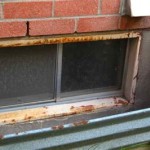How to Install a Sump Pump Basement
A sump pump is a vital part of any basement waterproofing system. It helps to remove water from the basement and prevent flooding. If you're planning to install a sump pump in your basement, there are a few things you need to know.
1. Choose the Right Sump Pump
There are two main types of sump pumps: submersible and pedestal. Submersible pumps are completely submerged in water, while pedestal pumps are mounted on a pedestal above the water line. Submersible pumps are generally more powerful than pedestal pumps, but they also cost more.
When choosing a sump pump, you need to consider the size of your basement, the amount of water that it typically floods, and the height of the water table. You should also consider the features that you want, such as an alarm or a battery backup.
2. Find the Right Location
The best place to install a sump pump is in the lowest part of your basement. This will help to ensure that the pump can remove all of the water from the basement.
When choosing a location for the sump pump, you also need to consider the location of the discharge pipe. The discharge pipe should be able to drain the water away from your house.
3. Dig the Sump Basin
Once you have chosen the location for the sump pump, you need to dig the sump basin. The sump basin is a hole in the floor of the basement where the sump pump will be installed.
The sump basin should be at least 12 inches deep and 18 inches wide. It should also be lined with a layer of gravel to help prevent the pump from clogging.
4. Install the Sump Pump
Once you have dug the sump basin, you can install the sump pump. The sump pump should be placed in the center of the basin and secured with bolts.
The discharge pipe should be connected to the sump pump and run out of the basement. The discharge pipe should be sloped downward so that the water can drain away.
5. Test the Sump Pump
Once the sump pump is installed, you should test it to make sure that it is working properly. To test the pump, simply pour a bucket of water into the sump basin.
The pump should start running and remove the water from the basin. If the pump does not start running, check the power supply and the pump's float switch.
6. Maintain the Sump Pump
Once the sump pump is installed, it is important to maintain it regularly. This will help to ensure that the pump continues to work properly.
To maintain the sump pump, you should:
- Check the pump's float switch monthly to make sure that it is working properly.
- Clean the pump's impeller and screen annually.
- Replace the pump's battery every three to five years.

Diy Sump Pump Install Your Own Smd Fluid Controls

Diy Sump Pump Install Your Own Smd Fluid Controls

What Is A Sump Pump Peel Pumps Explain It Or Sell And Install Them

Tips For Installing Sump Pumps 2024 10 17 Plumbing And Mechanical

Basement Sump Pump Sedona Waterproofing Solutions

How To Install A Sump Pump

Sump Pump Installs In Portland Bangor Rochester Maine Six Steps To Installing A System Me

Sump Pump Installation How To Install A Homeserve Usa

Installing A Sump Pump In Our Basement Youtube

Sump Pump Installation In Pa De Dry Tech Waterproofing Solutions
Related Posts







